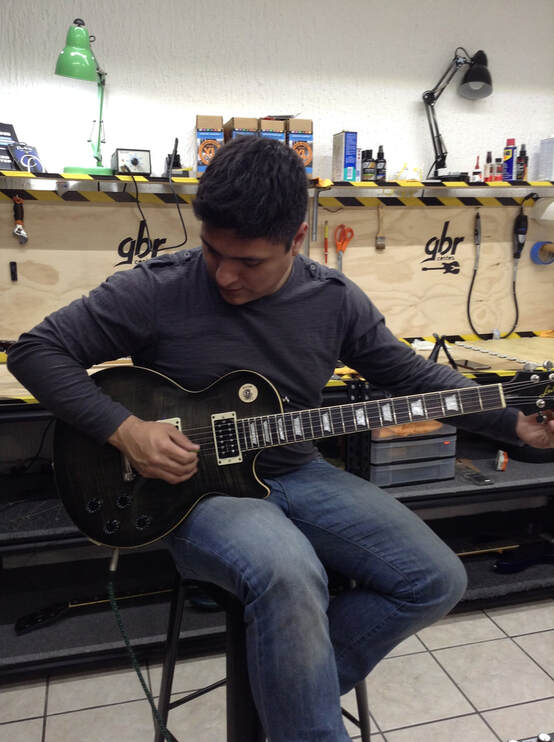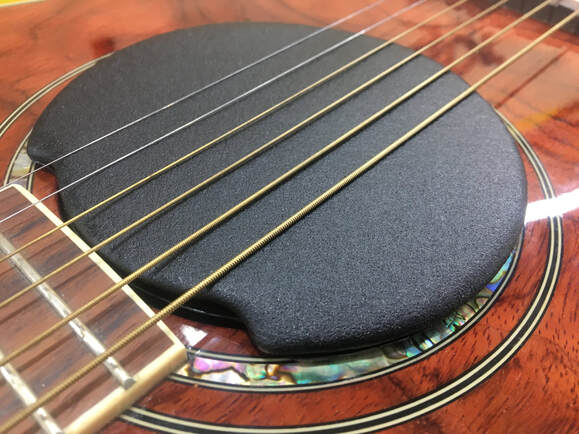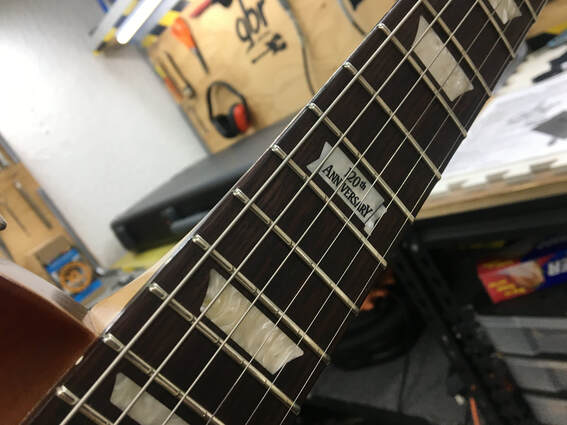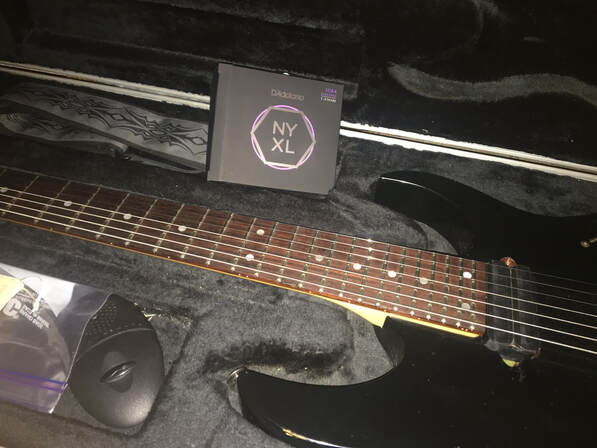¿Why does my guitar buzzes with weather changes?Every musician has their share of memorable moments with their instruments. Some of these moments are filled with joy and inspiration, while others can be frustrating and challenging. In the world of guitar playing, one such incident stands out vividly in my memory during my time at music school. Music school was an exciting time for me. I was surrounded by talented musicians, immersed in a creative environment, and eager to improve my guitar skills. However, this particular incident caught me off guard. I had been practicing diligently for an upcoming exam, and the last thing I expected was a technical problem with my instrument. It was dry season, and I picked up my trusty guitar only to find the strings too high and buzzing relentlessly around the first three frets and also around the 17th fret. Little did I know that I was about to learn a valuable lesson about the impact of low humidity on guitar necks. Join me as I recount this experience and shed light on the importance of maintaining proper humidity levels for optimal guitar performance. As I strummed my guitar, the buzzing sound echoed through the class room, dampening my enthusiasm. The strings felt unusually high, making it difficult to play certain chords and notes, and execute smoothly.In the midst of the challenges I faced with my guitar's buzzing strings, there was an added layer of significance to the situation. This beloved instrument was my dream guitar at the time, the culmination of years of longing and months of saving. A 1999 7 String Ibanez RG 7620 of Japanese making in almost mint condition that a had bought half a year before, and an instant extension of my musical aspirations. I remember how spending hours playing the seventh string with distorted sound and feeling like the world was going to end, on the day I took her home. This was before amazon and e-commerce where an everyday thing and before 8 and 9 string guitars where mainstream. I figured ‘no biggie’ and decided I’d adjust the neck and bridge later that day when getting back home. To my surprise, when trying to perform a setup on my dream guitar I realized the floating bridge was down as far as it could go and any attempt to fix the buzzing on the first 3 frets just made the strings way higher. No improvement at all and nothing to do. Frustration settled in, especially since the night before, the guitar was in good form. This was back in 2009, while starting music school and also as a guitar repairman and technician. I knew I had to figure out the cause of this unwelcome disturbance. But at this point, I was clueless. Amidst the frustration and disappointment caused by the buzzing and high strings, I made the decision to set aside my dream guitar until I could perform a cure. Since I was busy with school, that would take some time. Months went by and the guitar remained untouched, patiently waiting for its time to shine once again. Then, by sheer chance, I stumbled upon it one day during the rainy season. Curiosity got the better of me, and I decided to give it another try and see how it was doing after all this time. To my surprise and delight, the guitar was playable again. Not perfect, I should say, but the discomfort caused by the high action had significantly diminished and so had the buzzing. It was as if the moisture in the air had breathed new life into the instrument. This eye-opening experience made me realize that humidity not only affects acoustic guitars but also has an impact on electric guitars. The wood in the neck and body of electric guitars can still be susceptible to changes in humidity, leading to similar issues with high action and buzzing strings. From that moment on, I understood the importance of maintaining proper humidity levels for all my guitars, regardless of their type. Taking care of the humidity levels became a vital part of my routine as a guitarist. I invested in humidifiers for my guitar cases, ensuring that each instrument was protected and maintained in optimal conditions. Whether I was playing an acoustic or an electric guitar, I knew that controlling the humidity would help preserve the playability, tone, and overall lifespan of my cherished instruments. By paying attention to the environmental conditions and taking proactive measures, I found that I could minimize the negative effects of low humidity and maximize the enjoyment of playing my guitars. This newfound awareness transformed not only how I cared for my instruments but also how I approached my craft as a musician and as a guitar repairman and technician. In the end, and after a couple of years, I had to level and dress the frets of my guitar, just to be 100% sure the problem was all gone and my dreamed guitar had the perfect lowest action for my playing, and completely free of buzz. My experience with my dream guitar and its revival during the rainy season served as a turning point in my understanding of the impact of humidity on guitars. It propelled me to prioritize the maintenance of proper humidity levels for all my guitars, both acoustic and electric. Through this journey, I learned that caring for our instruments goes beyond mere technicalities; it is an essential aspect of preserving their integrity and ensuring they can continue to inspire us for years to come. During dry seasons, when humidity drops significantly, wooden instruments are prone to certain issues, and guitar necks are particularly vulnerable. Low Humidity and Guitar Neck Problems: Wood is a porous material that can absorb or release moisture based on its surrounding environment. When the humidity drops, the wood contracts, causing the guitar neck to shrink slightly. This shrinkage alters the curvature of the neck, resulting in high action (strings positioned higher than usual) and causing buzzing sounds. The first few frets and the higher frets, such as the 17th, are particularly affected due to their proximity to the neck's endpoints. Prevention and Remedies: To address this issue effectively, it is crucial to maintain proper humidity levels in the guitar's environment. Here are a few measures to consider:
This incident with my guitar during music school served as an important lesson about the impact of low humidity on guitar necks. It highlighted the necessity of maintaining proper humidity levels to preserve the optimal playability and sound quality of the instrument. By taking proactive measures, such as using humidifiers and practicing regular maintenance, guitarists can prevent or mitigate the issues caused by low humidity. Remember, caring for your instrument is as crucial as mastering the art of playing it. So, let's stay in tune with our guitars and ensure they are always ready to deliver the music that moves us Looking back on that frustrating day in music school, I realize that every challenge presents an opportunity for growth and learning. Understanding the effects of low humidity on guitar necks has empowered me to take better care of my instrument and anticipate potential issues. Beyond the technical aspects, this experience taught me the importance of patience and perseverance. As musicians, guitar repairmen (or in any other aspects of our lives) we will encounter obstacles along our musical journey, but it is our determination and resilience that allow us to overcome them and continue creating and playing music we love with a guitar we love. So, the next time you find yourself faced with buzzing strings and high action on your guitar during a dry season, remember that it might be a consequence of low humidity affecting the neck. Take the necessary steps to regulate humidity levels, seek advice from experts, and embrace the opportunity to deepen your understanding of your instrument. Ultimately, our guitars are not just tools for making music but cherished companions that deserve our care and attention. By acknowledging and addressing the impact of low humidity, we can ensure that our guitars remain in optimal condition, ready to accompany us on countless musical adventures. Let this experience serve as a reminder to all guitarists, whether beginners or seasoned professionals, to be mindful of the environmental factors that can affect our instruments. By doing so, we can maintain the integrity and playability of our guitars, allowing our music to be as fulfilling as possible. So, tune your guitar, check the humidity levels, and strum away, knowing that you have taken proactive steps to conquer the buzzing and create beautiful music, even during the driest of seasons.
0 Comentarios
Deja una respuesta. |
GBRCenter® (Mario Cárdenas)
Taller de reparación de guitarras. Luthier. Categories
Todo
Archives
Junio 2024
Archivos
Junio 2024
|





 Canal RSS
Canal RSS